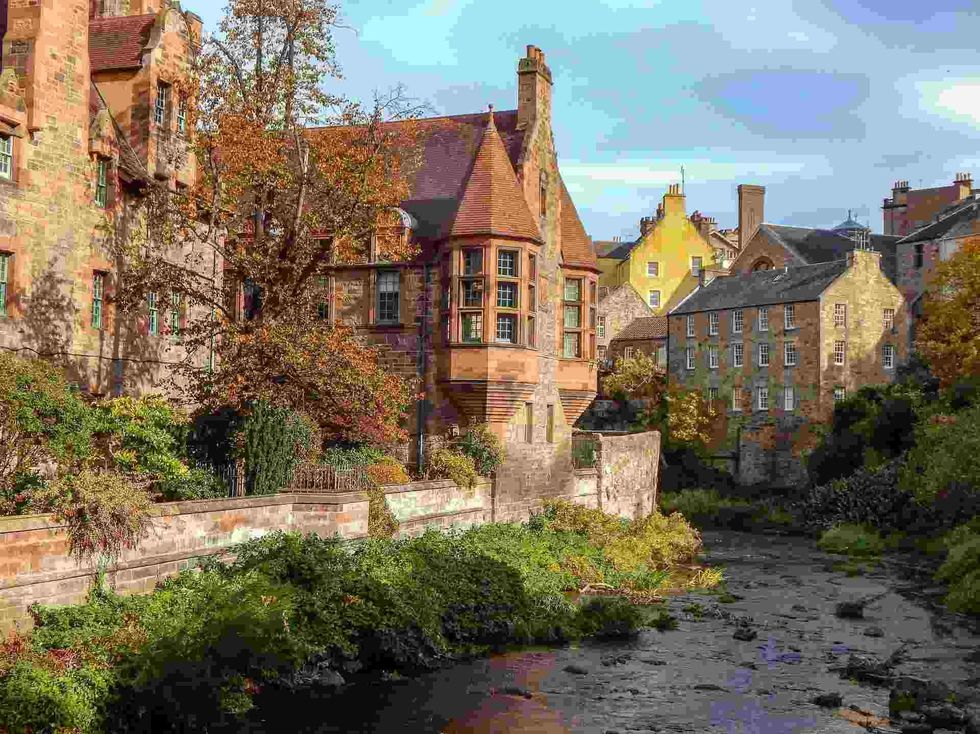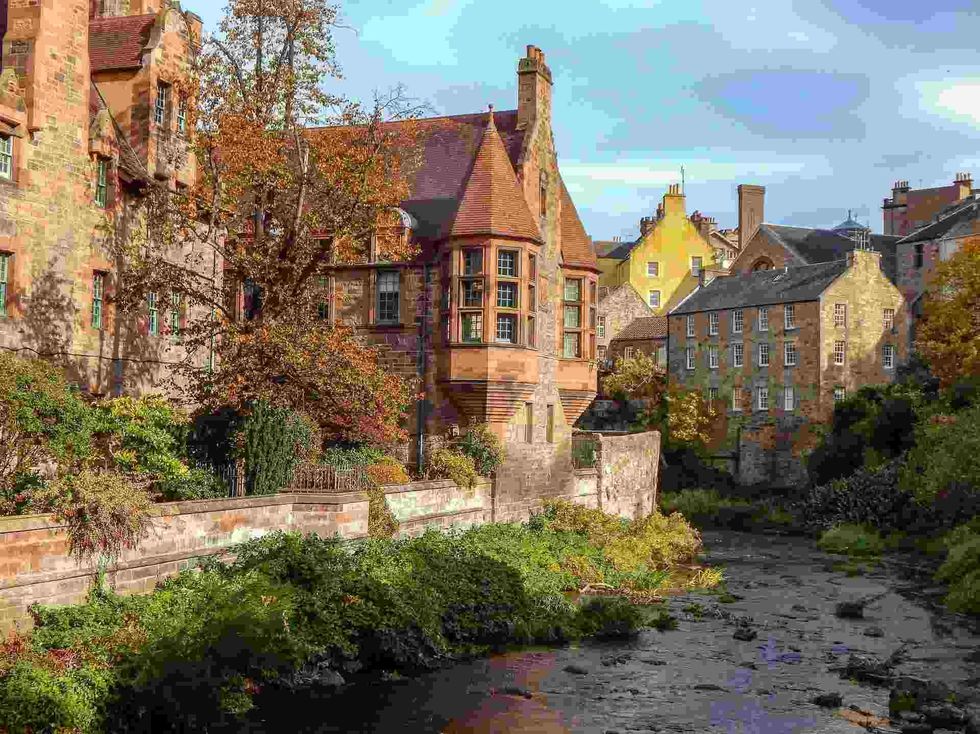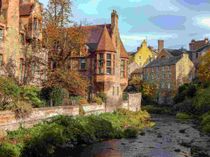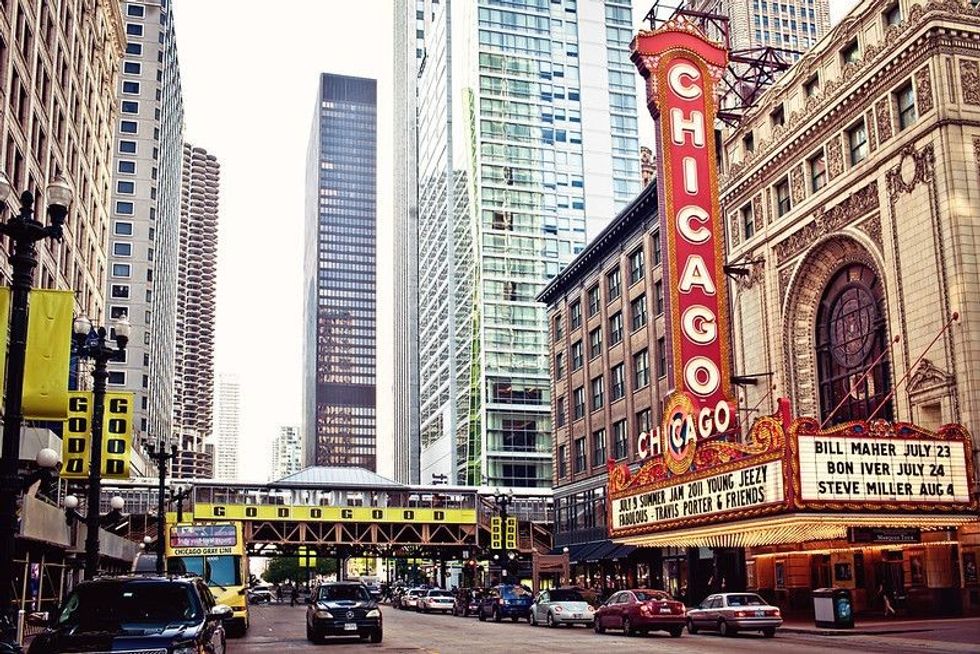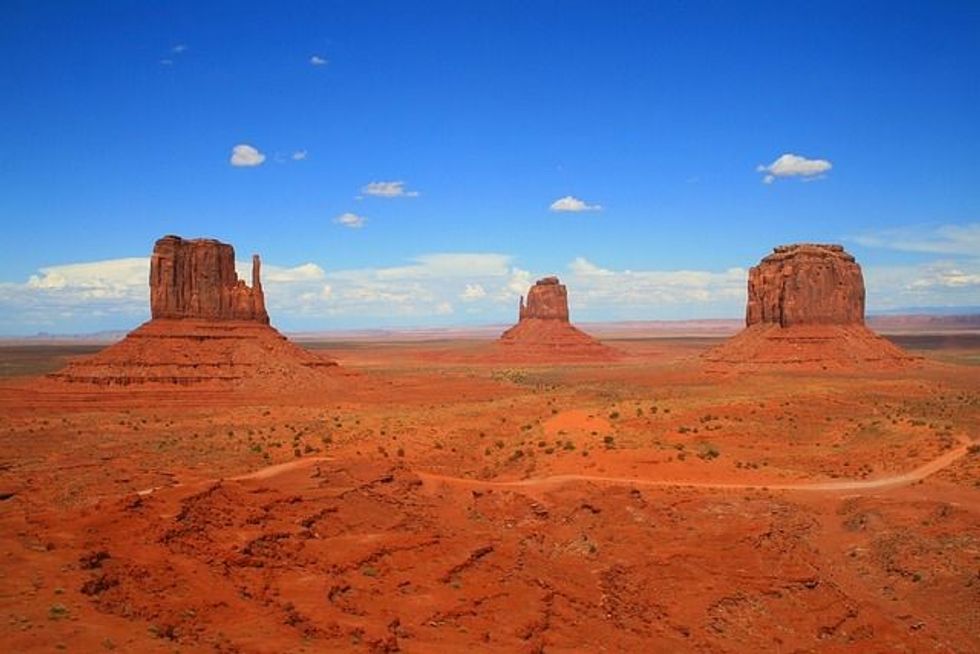78 Incredible Facts About Scotland For Kids

Scotland is a country known for its kilts, green rolling hills, and rich cultural history.
Scotland is part of the United Kingdom (also known as Great Britain), along with Wales, England, and Northern Ireland. It is the northernmost country in Great Britain.
The country of Scotland can be divided into three distinct geographical areas. Southern Scotland, the part that shares a border with England, is called the upper lowlands. The upper lowlands are agricultural lands that include rolling hills and splendid greenery.
Then there are the central lowlands, which are the parts of the country that are the most populated and urbanized. The main cities of Scotland, such as Edinburgh and Glasgow, are situated in this geographical section.
The Scottish Highlands are in the northern parts of the country. They make up to 50% of the whole of Scotland. The highlands are famous for their stunning scenery consisting of beautiful islands, steep cliffs, and cold, deep lakes, which are called lochs in Scotland.
About 800 islands are part of the Scottish Highlands. However, only about 130 of these islands are actually inhabited by humans.
Scotland's capital is the city of Edinburgh, while its largest city is Glasgow. Meanwhile, Dundee and Aberdeen are Scotland's other major cities. Scotland's national symbol is the thistle.
Interestingly, the national animal of Scotland is the unicorn. James II completely believed in the legend of the unicorn. Moreover, during the 15th century, the unicorn came to be recognized as a symbol of purity and power, which were values that Scotland's kings and nobility identified with.
There are three official languages in Scotland: English, the Scots language, and Scottish Gaelic. However, a very small percentage of people currently speak Gaelic in Scotland. This is not surprising as the use of all Celtic languages, even in Europe, has declined to the point of being virtually nonexistent.
While the majority of the Scottish people are Christian, a significant part of the Scottish population is not religious at all.
The people of Scotland believe in their traditions and culture deeply. There are still family tartans worn by people during important events. Scotland is quite famous for its kilts, which are skirt-like garments worn by men traditionally.
Scotland has also been home to many famous people, such as tennis player Andy Murray, biologist Alexander Fleming, who discovered penicillin, Alexander Graham Bell, who invented the first telephone, and many more.
With abundant natural beauty spread all over the country, Scotland also boasts rich wildlife. Animals that can most commonly be seen in Scotland include mountain hares, golden eagles, puffins, red deer, and red squirrels.
More wildlife can be found in the national parks of the country. Overall, the different geographical areas of Scotland boast rich and varied flora and fauna.
An interesting fact about Scotland is that the very first international football match happened in 1872 between Scotland and England. At the end of the game, both teams had scored no goals, and the match was declared a draw with a 0-0 goal score. Read on to explore more intriguing and wonderful facts about Scotland.
History Of Scotland
Scottish history is an interesting study. The country of Scotland has been integral in forming the history of the United Kingdom as a whole. Moreover, the history of the country and its culture are interlaced quite closely.
- The very first people who were able to reach as far north as present-day Scotland were the Romans.
- They called it Caledonia and were able to capture and conquer quite a big area of the country in about 83 AD.
- However, the troops were soon called back, and they never ventured to this area again.
- People from an Irish tribe called the Scots, or the Scoti, moved to Argyll, situated in Scotland, from Ireland in 5 AD. There they set up their independent kingdom.
- This is from where the country of Scotland gets its name.
- The Scots and the Picts ruled Scotland in the ninth century, and it was this region that later developed into the kingdom of Alba.
- During the 11th and 12th centuries, Scotland witnessed the firm establishment of the Scottish clan system.
- This system was present in the highlands, where a clan chief ruled the whole clan.
- Resembling tribes, the clans consisted of the family members and other people whose loyalty lay with the clan chief.
- Each clan had a specific territory under their rule, and the distinction between the people of different clans was made through the clothes they wore. This gave rise to the currently known Scottish clan tartans.
- Then, in 1314, the Battle of Bannockburn took place between the English and the Scots.
- Scotland won the battle and its independence through the army led by Robert the Bruce, who was considered the King of Scotland in 1328 by the English.
- Until the 15th century, Scotland was an independent country. Then, in 1603, Scotland became a part of Great Britain or the United Kingdom.
- This was done when James VI, son of Mary Stuart (Queen of Scots), also became king of England after the (mysterious) death of Elizabeth I.
- Even though England and Scotland were merged under one rule, they had separate parliaments for about 100 years.
- Many plans were developed to unite the two countries under one single rule of Great Britain.
- It only became possible in 1707 when the Act of Union made Wales, Northern Ireland, Scotland, and England merge to form the United Kingdom, bringing together all the nations of Great Britain politically.
- Then in 1746, the rebellion of the Jacobites led by Charles Edward Stuart, also known as Bonnie Prince Charles, angered the British government, which then enforced strict laws banning the use of Scottish Gaelic and wearing of clan tartans, among other things.
- After becoming a part of Great Britain and being under English rule for years, a separate Scottish government and the Scottish parliament were established in 1999 through a devolution process.
- Today, the Scottish government enforces its own laws separate from the English ones; the country also has its own education system.
- The new Scottish parliament was established in Edinburgh.
- There are around 129 elected representatives in the Scottish parliament that decides on what laws will be passed for the country.
- While the 1700s were filled with conflicts and mergers, the duration also witnessed the Scottish enlightenment.
- During this period of Scottish history, people of Scotland who were scholars, doctors, writers, and so on started to question the previously held beliefs of the rest of the population.
- They began to theorize and formulate new ideas and notions that were based on logic and changing perspectives.
- After the Scottish independence, the people of Scotland adopted the Scottish flag, which consists of a cross on a dark blue background.
- The cross on the flag stands for the cross of Saint Andrew, who was Scotland's patron saint.
- The flag of Scotland is also called Saint Andrew's Cross and Saltire.
Famous Scottish Food
Facts about Scotland also include the mouthwatering and unique cuisine of Scotland. If you are a food lover and plan to visit Scotland sometime soon, remember to try some of the Scottish dishes mentioned below.
- While mentioning the food of Scotland, the very first thing that comes to mind is the most popular dish, haggis.
- Haggis is the famous national dish of Scotland and not a type of animal as it is often confused for.
- Haggis is traditionally made from a sheep's heart, lungs, and liver.
- These different organ meats are minced along with oatmeal, onion, spices, salt, and suet.
- According to the traditional recipe, the mixture is boiled inside the actual stomach of the animal for about an hour.
- On the other hand, the evolved recipes make use of artificial casting instead of the real stomach of a sheep.
- Haggis can also be made from the organ meats of animals apart from sheep, and for people who are vegetarian, there are also variable vegetarian recipes of haggis.
- One of the Scottish poets, Robert Burns, wrote a poem called 'Address to a Haggis,' recited as a tradition on Burns Night while cutting open a haggis.
- According to the historical records found, whiskey was invented in Scotland.
- It is the go-to alcohol drink of Scottish people, and many tourists also enjoy a glass of whiskey on a cold day while visiting the country.
- Interestingly, the sausages in Scotland are square-shaped instead of the regular link sausages you see in other places.
- This unique shape might have been invented to accommodate them in Scot's sandwiches.
- Another famous dish of Scotland is the Scotch pie.
- The Scotch pies are meat pies with a double crust, making them rich and crunchy.
- Most bakeries and restaurants in Scotland bake these pies freshly, and they can be enjoyed both hot and cold.
- The Scottish Bakers' trade association has organized the World Scotch Pie Championship every single year since 1999.
- During this food event, people from around the globe are encouraged to come and try to win the Scotch Pie Trophy.
- While normally porridge is made with sugar, the Scottish porridge is made with salt, and so it becomes a savory dish instead of a sweet one.
- Scottish porridge is the traditional breakfast dish of Scottish people.
- Cullen skink is another traditional dish of Scotland that originated from a village with the same name in northeastern Scotland.
- Cullen skink is a smoked fish soup with a creamy texture.
- The recipe of this dish consists of potatoes, cream, onions, and smoked haddock fish, and it is generally accompanied by toasted bread.
- This dish can be found in many outlets all over the country, even when it started off as being a local Cullen specialty.
- In addition to the savory dishes mentioned till now, Scotland is a country where you will find deep-fried Mars.
- The concept of deep-fried Mars as a dessert was invented by John Davie in 1992.
- The dessert is made by covering the chocolate bar with a thin layer of batter consisting of flour, milk, and eggs and then deep-frying it.
- This crunchy and sweet dessert can be found in chippers, which are fish and chip shops, all over Scotland.
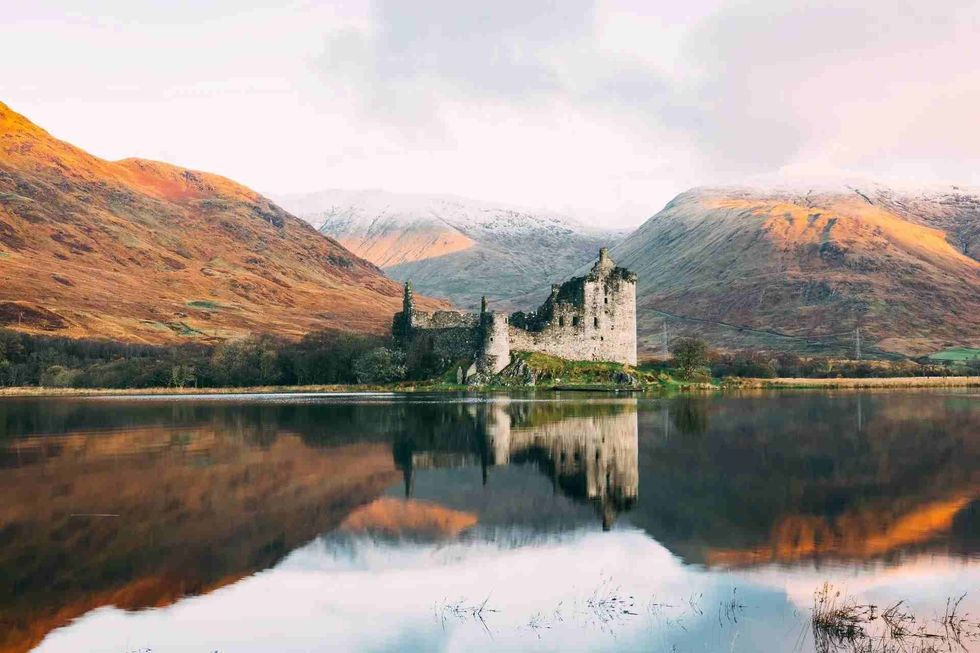
Tourist Attractions Of Scotland
Scotland is a country popular for its scenic beauty and its rich historical and cultural essence, which can be found in places all over the country. Several of the tourist attractions and interesting things you can do in Scotland are listed below.
- One of the fun facts about Scotland is that the world-famous fantasy series 'Harry Potter' by J.K. Rowling was written in Edinburgh.
- The places in the series are also said to be inspired by Scottish landscapes.
- While Kings Cross Station was situated in London, where Harry boarded the train for Hogwarts, the school was actually located in Scotland.
- The movies adapted from the book series also have scenes shot at famous Scottish locations such as Fort William, Glen Nevis, Loch Morar, and Glen Coe.
- People visiting Scotland can also ride the Hogwarts Express, which starts from Fort William, goes through Glenfinnan Viaduct, and then onto Mallaig.
- The Edinburgh International Festival is one of the biggest performing arts festivals in the world and is celebrated in the capital of Scotland.
- Over 300,000 people visit the country for this festival alone and get the chance to experience the Scottish culture, including the music created by the famous bagpipes of Scotland.
- If you are a history enthusiast, then Edinburgh Castle is the place for you.
- Situated in the capital city, Edinburgh Castle has beautiful stone towers that soar high and become part of the skyline of Edinburgh.
- The view of the rest of the city from the towers of the castle is magnificent and breathtaking.
- The New Town area of Edinburgh city consists of Georgian-styled townhomes and the Grassmarket.
- You can walk through this public square and take in the cozy shops, cafes, and galleries.
- The Royal Yacht Britannia, which was once the personal yacht of the Queen, has now been transformed into a museum that people can visit to tour the staterooms present on the yacht.
- The city of Glasgow is filled with museums and art galleries.
- Glasgow City can be best explored on foot, especially if you want to explore the Glasgow School of Art and Glasgow Cathedral.
- In the Scottish Highlands, you can visit the Cairngorms National Park for some adventurous activities like hiking, biking, sea kayaking, white-water rafting, and gorge walking.
- In addition to the outdoor activities, you can also take in the lush greenery and natural scenic beauty all around you.
- People who love myth and folklore can visit Loch Ness, where the infamous monster Ness was seen and whom people believe still resides there.
- Then there is St. Andrews Castle, or what remains of it. It is considered a top destination for golf.
- People from all over the world who play golf, including professional golfers, are drawn to the classic golf courses available at St. Andrews.
- It is also considered the oldest golf course in the world, established in 1754.
- Located nearby is also the British Gulf Museum which presents the history of the sport across the centuries.
- The museum is also a shrine honoring the great personalities who have played at the St. Andrews golf courses in the past.
Weather Of Scotland
Scottish weather can be quite unpredictable. Each different geographical part of Scotland experiences each season slightly differently.
- The country of Scotland is influenced by glaciation since it was once completely covered in ice.
- While Scotland's climate is oceanic and temperate, it tends to change frequently.
- It might be sunny one day, and the next it might be raining or covered with snow with the winds blowing.
- The winters in Scotland are considered to be mild, but many people find this country colder than most other places that experience strong winters.
- The extreme climates do not last long in Scotland. One type of weather may last for a day or two but not more than that.
- While in winter, the temperature might drop as low as 32° F (0° C), the temperature ranges around an average of 59° F (15° C) in the summer months.
We Want Your Photos!
More for You
Bachelor of Science specializing in Microbiology

Oluwatosin MichaelBachelor of Science specializing in Microbiology
With a Bachelor's in Microbiology from the Federal University of Agriculture, Abeokuta, Ogun State, Oluwatosin has honed his skills as an SEO content writer, editor, and growth manager. He has written articles, conducted extensive research, and optimized content for search engines. His expertise extends to leading link-building efforts and revising onboarding strategies.
Disclaimer
1) Kidadl is independent and to make our service free to you the reader we are supported by advertising. We hope you love our recommendations for products and services! What we suggest is selected independently by the Kidadl team. If you purchase using the Buy Now button we may earn a small commission. This does not influence our choices. Prices are correct and items are available at the time the article was published but we cannot guarantee that on the time of reading. Please note that Kidadl is a participant in the Amazon Services LLC Associates Program, an affiliate advertising program designed to provide a means for sites to earn advertising fees by advertising and linking to Amazon. We also link to other websites, but are not responsible for their content.
2) At Kidadl, we strive to recommend the very best activities and events. We will always aim to give you accurate information at the date of publication - however, information does change, so it’s important you do your own research, double-check and make the decision that is right for your family. We recognise that not all activities and ideas are appropriate for all children and families or in all circumstances. Our recommended activities are based on age but these are a guide. We recommend that these ideas are used as inspiration, that ideas are undertaken with appropriate adult supervision, and that each adult uses their own discretion and knowledge of their children to consider the safety and suitability. Kidadl cannot accept liability for the execution of these ideas, and parental supervision is advised at all times, as safety is paramount. Anyone using the information provided by Kidadl does so at their own risk and we can not accept liability if things go wrong.
3) Because we are an educational resource, we have quotes and facts about a range of historical and modern figures. We do not endorse the actions of or rhetoric of all the people included in these collections, but we think they are important for growing minds to learn about under the guidance of parents or guardians.
